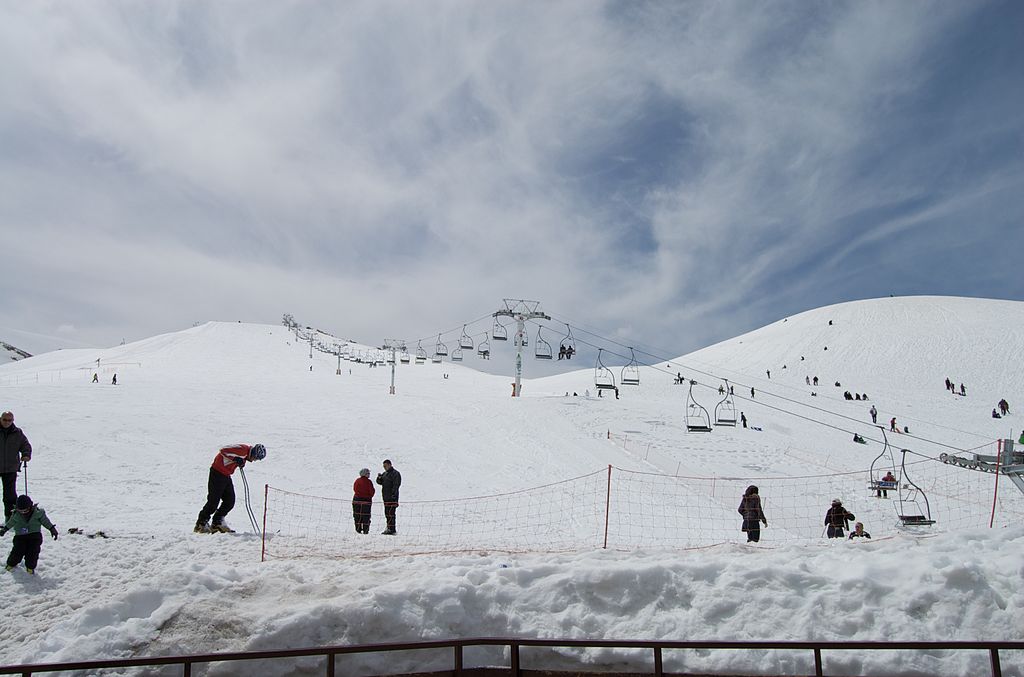Skiing the Middle East
Hitting the Slopes in Lebanon

Austin Bodetti
More often associated with sand dunes than with snowy peaks, the Middle East hardly has a reputation as an international skiing hotspot. Local enthusiasts, however, have long known where to find the region’s best slopes. By any account, Lebanon’s ski resorts lead the pack.
Just an hour from the Lebanese capital of Beirut, Mzaar Kfardebian opened in 1960 after the installation of a Swiss-made ski lift there. In the decades since, the location has evolved into Lebanon’s biggest ski resort and perhaps the country’s most popular. In 2016 and 2017, Mzaar Kfardebian even hosted events for the Asian Alpine Ski Championships. The area has plenty of competition, however. “The Ultimate Guide to Skiing in Lebanon” lists four other major skiing destinations in the country, including Cedars Ski Resort, Lebanon’s oldest.
Most sources trace the beginning of skiing in Lebanon to Ramez Ghazzaoui, a Lebanese student who learned to ski in Switzerland and brought the sport home with him in 1913. French soldiers, who occupied Lebanon until it gained independence in 1946, further popularized skiing when they opened a ski school in the 1930s. The French outpost served as the predecessor to the Skiing and Mountain Fighting School, now operated by the Lebanese Armed Forces.
Today, several Lebanese government agencies share the military’s enthusiasm for skiing. The Lebanese Tourism Ministry has supported the Lebanese Ski Federation, which organizes what it has dubbed “the International Week of Skiing.” According to the ministry’s website, “Lebanon boasts a number of world-class ski resorts, one of only a couple countries in the Middle East where you can ski.” The Lebanese Foreign Ministry goes a step further, lauding Lebanon as “the only country in the Arab world that offers skiing and related winter sports activities.”
Lebanese officials’ bold assertions notwithstanding, plenty of other Arab and Middle Eastern countries have established ski resorts. In Dubai, Mall of the Emirates includes an indoor skiing area; the Korek Mountain Resort and Spa, nestled in the mountains of Iraqi Kurdistan, makes for a more natural setting. Iran and Turkey also feature a number of excellent slopes for skiing, making them Lebanon’s most serious rivals for winter tourism in the Middle East.
In the western corner of the Arab world, the countries of the Maghreb seem eager to replicate the Lebanese model. Edward M. Gabriel, a skiing enthusiast and former American ambassador to Morocco, has lavished praise on the Oukaïmeden ski resort near Marrakech and noted that tourists will find “more snow in the High Atlas than many New England resorts.” Meanwhile, a variety of websites trumpet Mischliffen, a resort town near the city of Ifrane, as “the Moroccan Aspen.” Following Morocco’s success, Algeria has even opened a ski resort of its own.
As skiing grows in popularity throughout North Africa and West Asia, some of the regions’ top skiers have started to demonstrate their skills abroad. Iran, Lebanon, Morocco, and Turkey fielded alpine skiers at the 2010, 2014, and 2018 Winter Olympics. The Moroccan alpine skier, Adam Lamhamedi, also won a gold medal at the Youth Olympic Games in Austria in 2012.
With the rise of Olympic skiers and the spread of ski resorts, the Middle East may soon develop a reputation as an unlikely skiing hub. In a nod to this trend, in recent years a few countries in the region have adopted sand skiing, a Namibian-pioneered version of the sport that lends itself to North Africa and West Asia’s many deserts. For now, though, the chance to slide down the icy slopes of Lebanon and its neighbors dominates the conversation on skiing in the Middle East.
AUSTIN BODETTI is a Rabat-based researcher specializing in Middle Eastern studies. His work has appeared in USA Today and Wired. He is a regular contributor to MizanPop. Any opinion or analysis expressed in this piece is by the author under the auspices of MizanProject.org and is not associated with any other entity.


